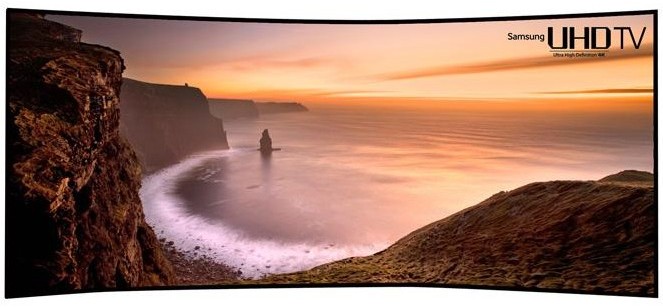
It was tough sifting through all the cellphone accessories and headphone booths, but I think I found some key trends in the mix.
4K & Ultra HD Televisions
This might seem like an obvious one, but the sheer amount of 4K/Ultra HD televisions at the show was very impressive. Samsung, LG, Sony, Panasonic, Polaroid, Toshiba, and many others all had offerings in this arena. The technology is improving and price points are dropping, so it is pretty clear that more consumers will be bringing home Ultra HD televisions this year than last. However, this does bring up a number of considerations that filmmakers must keep in mind.
4K vs Ultra HD
This is a confusing topic for some, as we generally talk about image resolution in vertical lines. A 1920x1080 resolution HD video is usually called "1080"; however, it has become a trend to refer to 4K video by its horizontal resolution. DCI spec 4K video has a resolution of 4096x2160, so we could call it "2160", but 4K just sounds better, right?
So what about Ultra HD? If you divide 4096 by 2160 you'll see it has a 1.89 ratio (17x9), which is wider than the 1.78 ratio of typical 16x9 HD video. Yet, the vast majority of content we watch today is still formatted in a 16x9 aspect ratio. This is where Ultra HD comes in - it has the same vertical resolution of 4K, but with a horizontal resolution of 3840 pixels, which gives it a final resolution of 3840x2160. Most of the TVs shown at CES are Ultra HD resolution, keeping that 16x9 aspect ratio alive. That's why, technically, the term 4K is a misnomer when it comes to consumer gear.
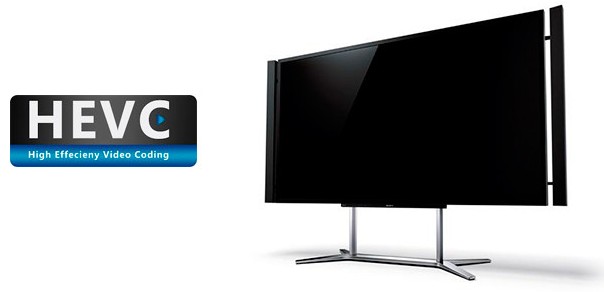
4K Delivery
Many cameras today can produce 4K content, with manufacturers like RED, Sony, Canon, and many others already in the game. The big question I think we all have about 4K is how consumers are going to get access to content. No one is crossing their fingers for a 4K BluRay disc to arrive - the content must stream into our homes. I spent a lot of time in the Samsung, Sony, and LG booths asking questions about exactly how we're supposed to easily watch this content.
4K content is big so it needs to be compressed. Thankfully new compression is emerging in the form of H.265/HEVC (High Efficiency Video Codec) and the royalty free codec VP9, which will allow us to stream 4K over the internet into our homes. Netflix recently announced they will stream their series House of Cards in 4K HEVC at around 15Mbps. You'll need a pretty fast connection to get that to work, but it's definitely within reach for many of us.
The tricky part is that you need something to decode that HEVC or VP9 compressed video. Samsung and LG have built HEVC decoders right into their new TVs, which thankfully all have Netflix apps built in too. Samsung has also announced deals with Amazon, Comcast Xfinity and DirectTV to stream 4K content as well. Sony has an external 4K Ultra HD media player, which works exclusively with their TVs, that will download 4K content from Sony's servers for later viewing. RED has their REDRAY player that can play back RED footage and stream some 4K content from the internet as well. I hope that more companies produce external 4K streaming boxes in the future - a 4K Apple TV would be fantastic, and certainly an Xbox One or PS4 would make good decoders as well.
In short, when these new TVs ship, there will be some content to watch - certainly not the thousands of HD channels available today - but enough to whet the appetite of an early adopter.
4K Demand
There is ongoing debate about the real need for 4K, and if people can even tell the difference between HD and 4K/UHD at normal viewing distances. These debates remind me of the conversation we all had back at the introduction of HD television. Whatever side of the debate you are on, with these new TVs there will no doubt be an increased demand for content. That's a good thing for anyone who has invested in the latest camera gear, and greater demand for content means improved business for the film industry. 2014 might be a banner year for 4K on the consumer level, and I know my next TV will be 4K.
Headsets
Sony Wearable HDTV
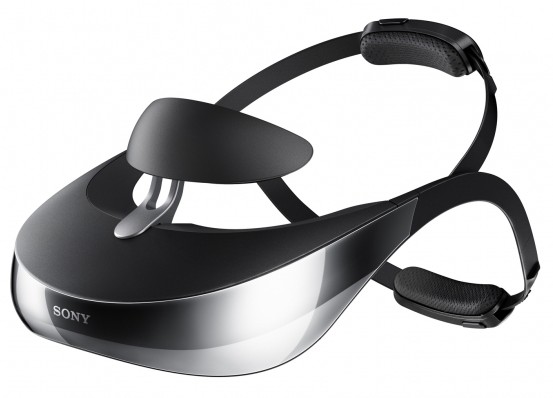 The concept of wearing a headset to watch video content might not be all that appealing to many of us, but at CES this year I saw two products that I think might change your mind. The first is the Sony Wearable HDTV 2D/3D (HMZ-T3W), which features two 720p OLED displays inside. The displays remind me of the F55 OLED viewfinder, very clear and with great contrast. The headset itself is light and fairly comfortable to wear. Sony says the headset is equivalent to a 750" (62') screen from 65 feet away, and I can see what they mean when wearing it. It creates a virtual big screen TV right in front of you. The headset has an HDMI input, and comes with a battery.
The concept of wearing a headset to watch video content might not be all that appealing to many of us, but at CES this year I saw two products that I think might change your mind. The first is the Sony Wearable HDTV 2D/3D (HMZ-T3W), which features two 720p OLED displays inside. The displays remind me of the F55 OLED viewfinder, very clear and with great contrast. The headset itself is light and fairly comfortable to wear. Sony says the headset is equivalent to a 750" (62') screen from 65 feet away, and I can see what they mean when wearing it. It creates a virtual big screen TV right in front of you. The headset has an HDMI input, and comes with a battery.
I can see this piece of gear being handy for many filmmakers as an on-set monitor, especially when combined with a wireless system. Imagine how it could transform a video village.
Oculus Rift
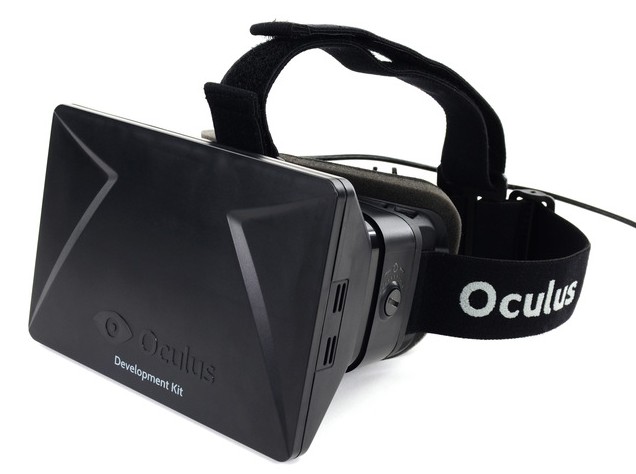 This VR Headset was one of the most buzzed about things at CES this year, and after trying it out, I can understand why. This system produces a completely immersive environment that is truly impressive. Designed for video games and other virtual reality applications, the Oculus Rift will no doubt become a popular product when it becomes available commercially. For filmmakers, the device would not serve as a great tool for an on-set monitor, as it's designed to fill your field of view. However, it could drive a need for extreme wide angle content that could be turned into virtual environments. Applications for this are already out there: a company called 360Hero is producing a rig right now that will create a 360-degree video signal from multiple GoPros. The GoPro video is stitched together with software from a company called Kolor, and their Kolor-Eyes software can output these stitched files into a format compatible with the Oculus Rift. I could see camera technology developed to work directly with the Oculus in the future. This is definitely very interesting stuff, and something to keep an eye on.
This VR Headset was one of the most buzzed about things at CES this year, and after trying it out, I can understand why. This system produces a completely immersive environment that is truly impressive. Designed for video games and other virtual reality applications, the Oculus Rift will no doubt become a popular product when it becomes available commercially. For filmmakers, the device would not serve as a great tool for an on-set monitor, as it's designed to fill your field of view. However, it could drive a need for extreme wide angle content that could be turned into virtual environments. Applications for this are already out there: a company called 360Hero is producing a rig right now that will create a 360-degree video signal from multiple GoPros. The GoPro video is stitched together with software from a company called Kolor, and their Kolor-Eyes software can output these stitched files into a format compatible with the Oculus Rift. I could see camera technology developed to work directly with the Oculus in the future. This is definitely very interesting stuff, and something to keep an eye on.
Robotic Camera Operators
SoloShot2 & Jigabot AIMe
Back in a corner of the convention hall, near all the cool robotic toys, were two booths featuring robotic camera operators. The SoloShot and Jigabot AIMe are small robotic pan/tilt heads that are designed to follow a sensor or beacon. Place the sensor on your subject and the robotic head will follow them around. Pretty cool idea for anyone working solo.
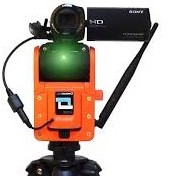 The SoloShot2 can hold cameras up to five pounds, and also has an interface for certain Handycams to control zoom functionality. Targets can be at a distance up to 2000 ft away and multiple targets can be tracked at once, with the closest one getting the attention. I can see this tool being used for a variety of professional applications, especially where an unmanned additional camera is required.
The SoloShot2 can hold cameras up to five pounds, and also has an interface for certain Handycams to control zoom functionality. Targets can be at a distance up to 2000 ft away and multiple targets can be tracked at once, with the closest one getting the attention. I can see this tool being used for a variety of professional applications, especially where an unmanned additional camera is required.
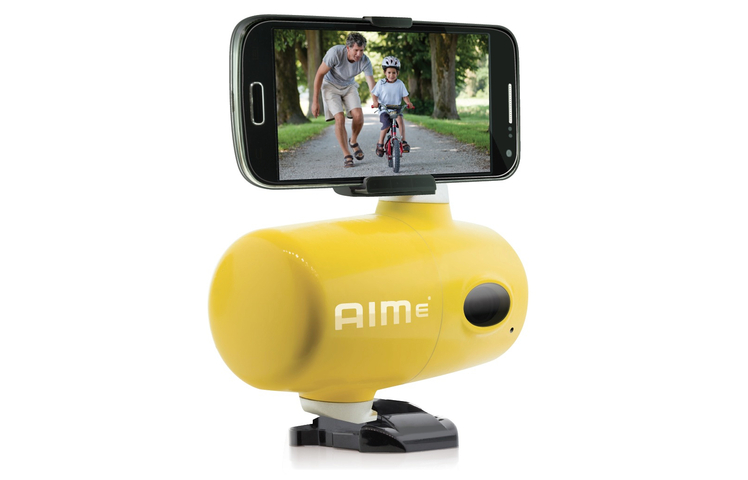 The Jigabot AIMe is a small device that's really designed to work with GoPros and smartphone-sized cameras. Its target beacon, called EmIT, can be tracked by multiple AIMes at up to 150 feet away. I can see this being used in a variety of professional applications with GoPro cameras in close quarters.
The Jigabot AIMe is a small device that's really designed to work with GoPros and smartphone-sized cameras. Its target beacon, called EmIT, can be tracked by multiple AIMes at up to 150 feet away. I can see this being used in a variety of professional applications with GoPro cameras in close quarters.
I'm hoping to see higher-end versions of these tools, with higher weight capacities, in the future. No doubt that professionals could use them for a variety of applications.
What was the coolest thing you saw at CES this year? Let us know in the comments!















